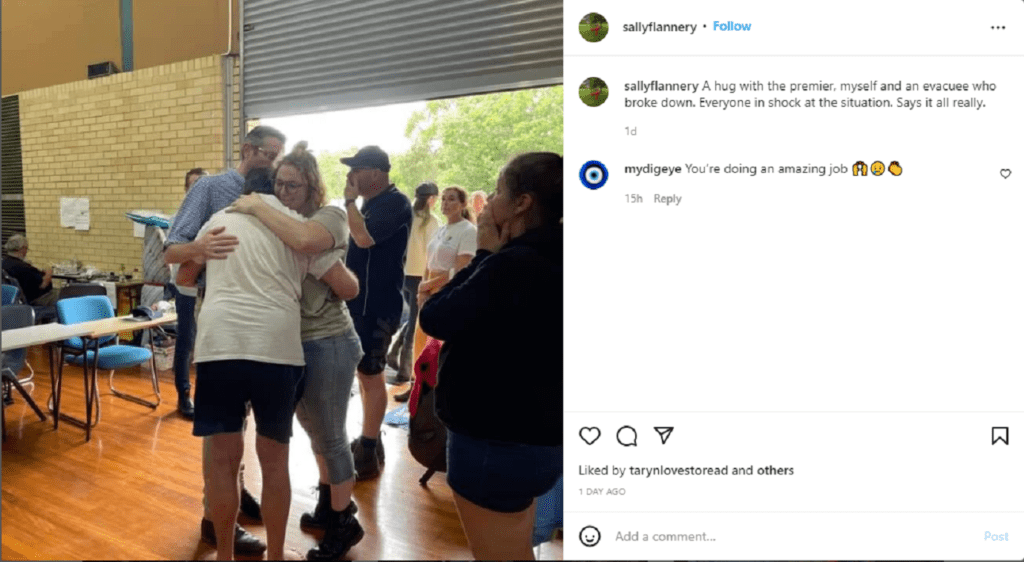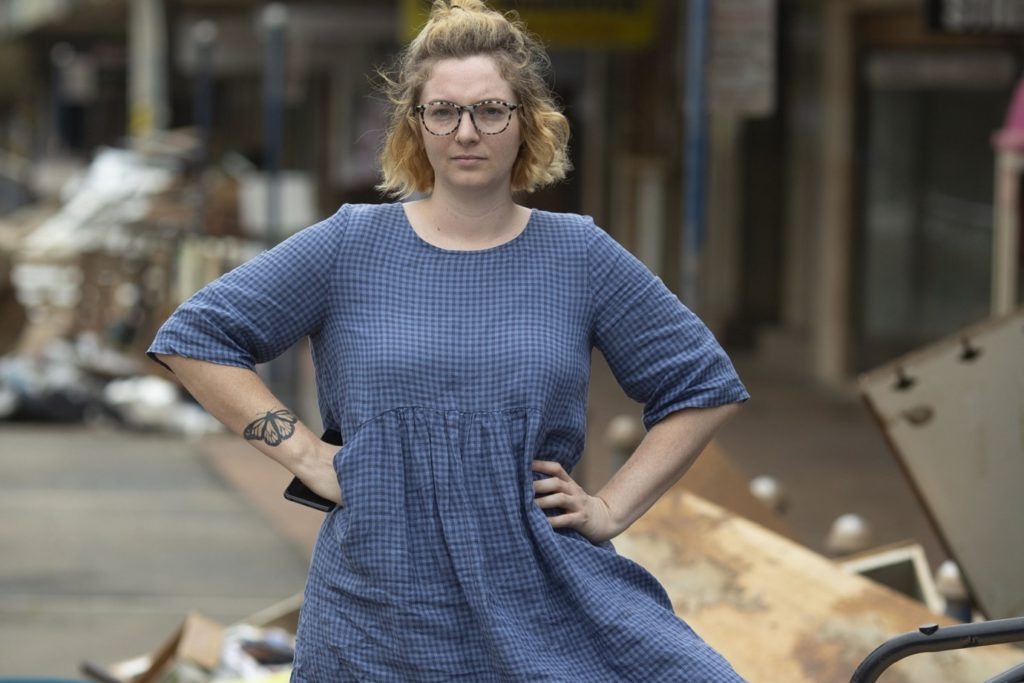When the floods hit the now devastated town of Lismore in NSW last week, Sally Flannery lost everything. The caravan she was living in, her workplace, and the shopfront she was about to open all went under.
When the water levels rose dramatically, she was staying at her partner’s apartment, where the pair waited hours to be evacuated. Just before her phone ran out of battery, she put up a quick post in the Lismore small business Facebook page she runs, sharing her own distressing experience of not being able to contact the SES and asking if anyone else needed help.
Her phone died a short while later, and eventually she was rescued and sought refuge at a friend’s house.
“I had a shower at my friend’s house, and then sat down to charge my phone and there was over 1000 comments on the post I made, with people needing help” Flannery told Women’s Agenda.
“I felt like somehow it was my responsibility to help them. There was just no coordination happening.”
Flannery used a program called ClickUp to start collating the details and addresses of people who had commented on her post, needing rescuing. The problem was that there were volunteers out in the water ready to undertake rescues, but no one knew where to send them.
“I saw some SES people walking past and I asked if it was useful, and they sent me to the SES headquarters, and I helped them clear 200 rescues already in their system straight away,” she said.
“I then went to the evacuation centre to see if I could give them the list and plug it in with their records of who was checking in.
“I quickly realised they didn’t have a system. It was all on paper. So, I started digitising it myself and eventually I put a call out on socials, and I had 16 volunteers there within the half hour. We stayed up until 4’o clock in the morning.”

Flannery worked with the team of volunteers, manning the desks at the centre the entire week, and increasingly the SES and police started to use her system. The work of digitally collating and sharing the status and whereabouts of people in need of help was vital to the rescue efforts in the town and saved lives.
“We helped them with over 1000 rescues on their database. Then we expanded to have an animal rescue person and boat liaison team.”
On the Monday night, Flannery explains that the woman who had taken charge at the evacuation centre had to leave because her own house had flooded. She quickly realised someone needed to step up as the leader.
“Everyone I was speaking to was saying there was no one in charge and it was falling apart. And it really was. It was really horrific,” she said.
“So I sat there, and wrote a plan of how we could make it better. I showed everyone and said, ‘give me the word and I’ll step up and be the manager’. The next day, everyone said, ‘Yep, let’s do it’. And I stepped up for those days, until the other woman returned.”

More than a week on since the worst days of the floods, Flannery says Lismore is now a devastated town in the midst of a housing and mental health crisis.
The trauma experienced by people in Lismore and surrounding areas is palpable, and Flannery is concerned the mental health response is “non-existent”.
“For my volunteers, some have ended up in hospital, they need trauma counselling in a huge way. Some of our team members found bodies and things like that. We need mental health support for them now,” she says.
“And for all the leaders in the community that have stepped up, they’re all starting to crumble. I worry about what’s going to happen when they do, because we need them there for the next time.”
In the coming days, Flannery says there needs to be access to substantial disaster relief payments and housing solutions for the crisis that has left thousands of people with nowhere to live.

Then, she wants to see swift action on climate change from state and federal governments.
“We need climate change action, reduced emissions, and we have to move away from coal. It’s so urgent. And the actual emergency response system needs a total overhaul. It’s not agile, it failed us and ultimately it cost us lives.
“Our community didn’t need Scott Morrison to tell us this is a national emergency, we knew that from Monday night. I don’t think people are expecting much from the government and sadly, the official government response just hasn’t been enough.”
Main Image Credit: Media Mode.


